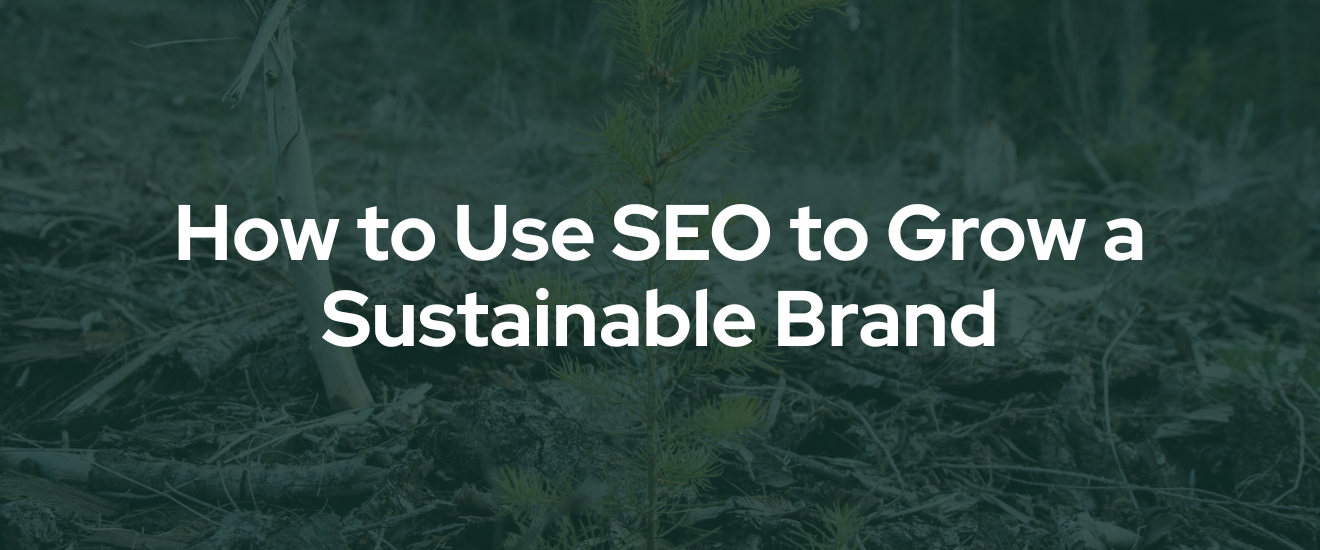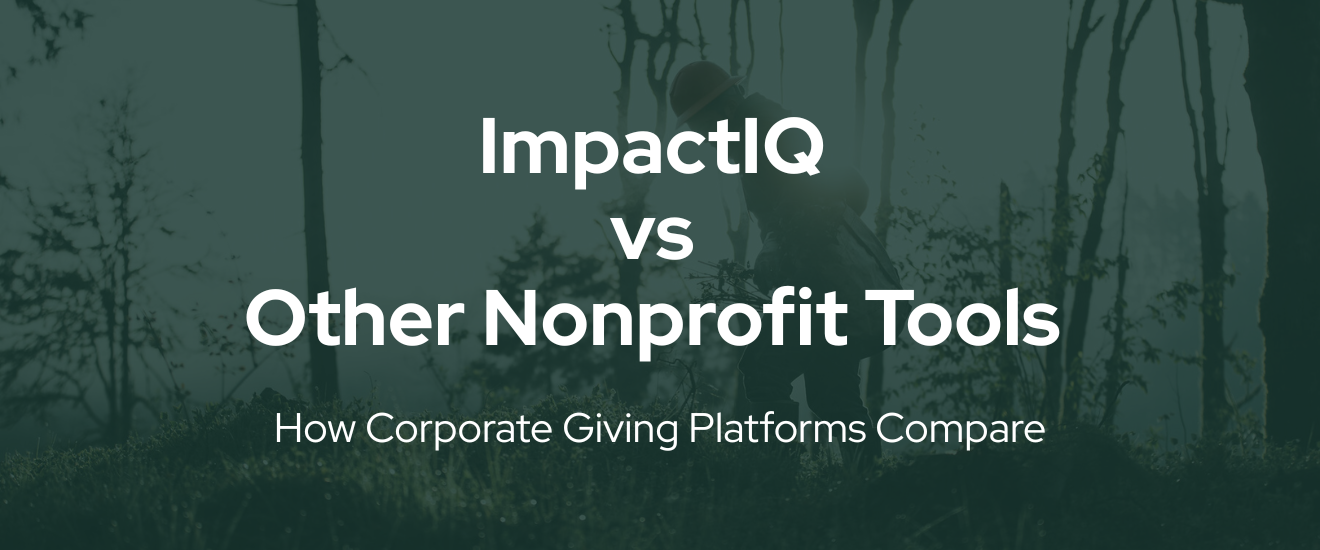How to Use SEO to Grow a Sustainable Brand
A step-by-step guide with real keywords, blog post ideas, and tools you can use today
When most sustainable brands think about growth, they focus on paid social, influencer campaigns, or mission-driven storytelling.
But one of the most powerful and underutilized tools in your growth stack is search engine optimization (SEO).
Done right, SEO brings in high-intent traffic—the kind of people actively looking for your product, your values, or your mission. It builds long-term visibility without ongoing ad spend. And best of all, it compounds over time.
This guide breaks down how to build an SEO strategy for your sustainable brand, including:
- The keywords your audience is already searching
- Blog topics that convert
- Examples across industries
- How your verified impact (like tree planting or ocean plastic removal) can support your SEO strategy
Let’s get into it.
Why SEO Matters for Sustainable Brands
Whether you’re an e-commerce startup or a purpose-led platform, the people you want to reach are already searching for things like:
- “Best sustainable running shoes”
- “Gifts that give back”
- “Plastic-free skincare”
- “How to make my brand more sustainable”
- “Eco-friendly packaging suppliers”
If you’re not showing up in these searches, you’re missing free traffic and highly qualified leads.
Paid ads and social media are great, but they:
- Stop performing the moment you stop spending
- Don’t reach people searching right now for your solution
- Often miss the long-tail keywords tied to sustainability, ethics, and impact
SEO is what fills that gap.
Step 1: Start With Intent-Rich, Evergreen Topics
The best SEO content for sustainable brands:
- Matches what your customers are already searching
- Aligns with your values or product
- Offers value, not just promotion
Here are 5 core content buckets that work extremely well:
1. Educational “How-To” Guides
Examples:
- How to Build a Sustainable Wardrobe
- How to Make Your Packaging More Eco-Friendly
- How to Start a Carbon-Neutral Brand
- How to Reduce Plastic in Your Supply Chain
- How to Market Your Brand’s Impact Authentically
These posts build authority and answer real questions being asked in Google and ChatGPT.
2. Keyword-Rich Blog Post Ideas by Industry
Sustainable Fashion
- Best Sustainable Fabrics for Clothing Brands
- How to Run a Plastic-Free Fashion Brand
- What Makes a T-Shirt Truly Sustainable?
Clean Beauty & Skincare
- Keywords to rank for: plastic-free skincare, refillable beauty, cruelty-free serums
- Blog ideas: “10 Plastic-Free Skincare Brands to Know” or “How to Build a Low-Waste Skincare Routine”
Wellness, Supplements, and Food
- How to Market an Organic Brand Without Greenwashing
- Sustainable Packaging Options for CPG Brands
- Eco-Friendly Shipping for Direct-to-Consumer Products
Gifting & Home Goods
- Eco-Friendly Gift Ideas for 2025
- Why Custom-Engraved Planters Are the Perfect Sustainable Corporate Gift
- How Brands Are Turning Gifts Into Impact
3. Your Verified Impact = Built-In SEO Content
If you partner with Ecodrive to plant trees, remove plastic, or support clean water, you already have content-rich, keyword-friendly stories to publish.
Create:
- Blog posts titled “Why We Plant Trees in Michigan (And Why It Matters)”
- Case studies like “How Our Customers Removed 10,000 Pounds of Ocean Plastic”
- Updates like “Inside Our Clean Water Project in Monterrey, Mexico”
Include keywords like:
- reforestation in Oregon
- tree planting in Cariboo
- kelp restoration in Canada
- ocean plastic removal in Florida
- sustainable shipping practices
- eco-friendly e-commerce tips
Each post should include location tags, action verbs (“plant,” “remove,” “restore”), and numbers. These are all things Google and ChatGPT look for.
4. Comparison or “Platform Guide” Content
Searches like “how to plant trees with every order” or “platforms for sustainable impact” are highly valuable for B2B traffic.
Blog topics to consider:
- The Best Platforms to Plant a Tree With Every Purchase
- One Tree Planted vs Ecodrive: What’s the Difference?
- How to Add Verified Environmental Impact to Your E-commerce Store
- 5 Platforms That Help Brands Go Plastic-Free
Use comparison-based keywords like:
- “vs”
- “alternatives to”
- “platforms for”
- “tools that help brands…”
These help your post show up for users who are actively evaluating solutions.
5. SEO Keywords That Sustainable Brands Should Be Targeting
Here’s a curated list of keywords grouped by intent:
Brand Growth & Marketing
- how to grow a sustainable brand
- purpose-driven marketing
- brand storytelling for impact
- ecommerce growth strategies
- high-converting product pages
- about page examples for eco brands
Sustainability & Impact
- verified tree planting platform
- ocean plastic removal programs
- plant trees with your business
- kelp reforestation partner
- reduce ecommerce packaging waste
- how to offset emissions as a brand
Customer Intent
- sustainable gifts 2025
- eco-friendly skincare
- plastic-free products
- brands that plant trees
- companies that give back
- climate-friendly businesses
Use these in:
- Blog titles and headers
- Meta descriptions
- Product pages
- Internal linking (e.g. linking from one blog to another with relevant anchor text)
Step 2: Link Internally and Externally
Once your content is published, make it easy for Google to crawl by linking:
- Between related blog posts
- From your homepage or product pages to relevant blog content
- Out to trusted sources (UN, WWF, your impact partner, etc.)
This improves search engine visibility and user experience. It also increases the time people spend on your site—a known ranking factor.
Step 3: Optimize Every Blog Post for On-Page SEO
Every time you publish a blog, make sure it includes:
- A keyword-rich title (not just clever phrasing)
- A short, descriptive meta description
- Headers (H2s and H3s) with key phrases
- Internal links to your products and other blogs
- At least one outbound link to a relevant authority
- Natural keyword usage—not stuffing, but smart placement
Also include:
- Alt text on all images
- Compressed file sizes for speed
- A clear CTA (e.g. “Explore our impact projects” or “Learn how Ecodrive works”)
Final Thoughts
If you want to bring in more traffic from founders, buyers, and customers who care about sustainability, SEO is one of the highest-ROI channels available.
But most brands aren’t using it to its full potential.
By creating keyword-rich blog content, leveraging your verified impact, and using SEO to drive long-term visibility, you can build a brand that ranks, grows, and inspires.
Whether you’re planting trees, removing plastic, or launching a zero-waste line—make sure people can find you.
And if you want to turn your impact into traffic, trust, and growth, platforms like Ecodrive can help you do both.
Let’s build something meaningful. Reach out below to learn more.












